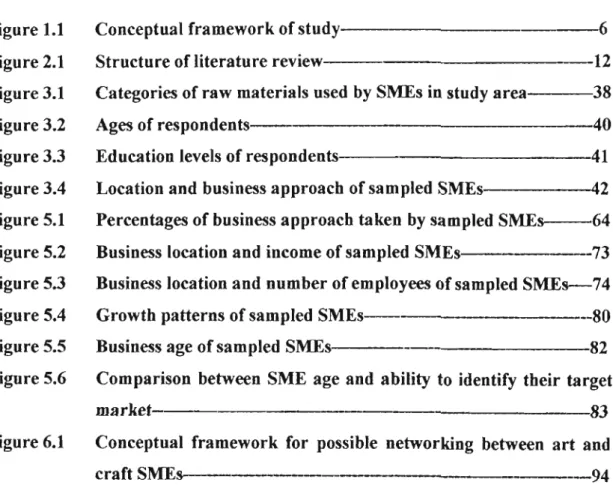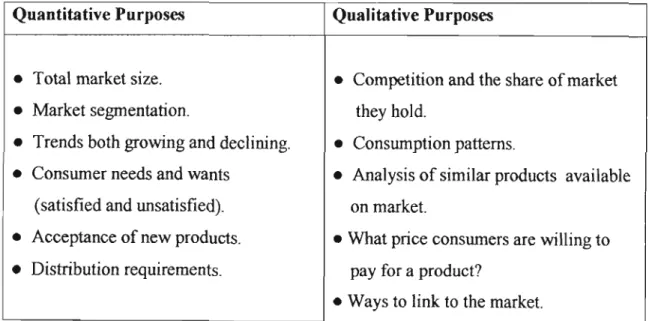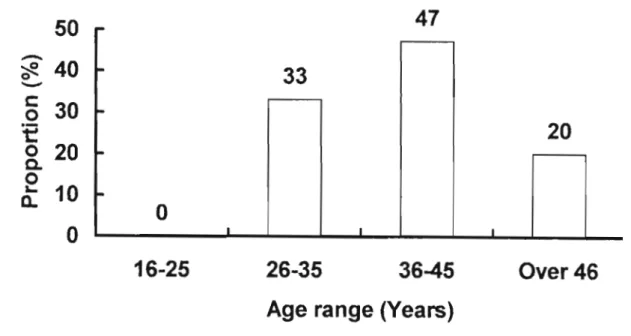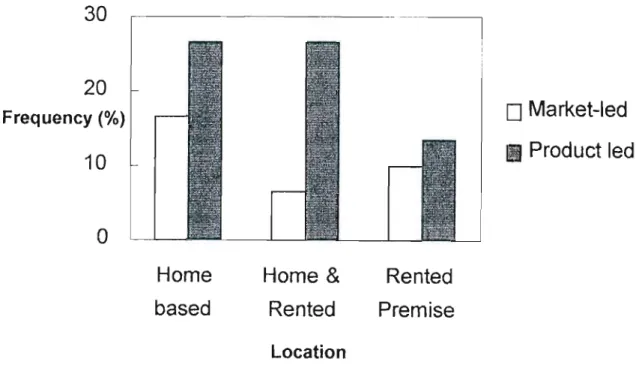The findings of the study showed that only one-third of the sampled SMEs adopted a market-led approach to running their businesses, and all of these did so after establishing their businesses. Further analysis highlighted the fact that most of the sampled SMEs experienced growth in terms of higher sales returns and more employment opportunities created regardless of the business approach adopted.
LIST OF ACRONYMNS AND ABBREVIATIONS
- Problem statement
- Sub-problems
- Research hypothesis
- Conceptual framework
- Assumptions
- Chapter summary
- Structure of the dissertation
A market-driven approach benefits small and medium-sized arts and crafts businesses in the KwaZulu-Natal Midlands in terms of increased sales (turnover) and employment created. The problem of the research is to determine whether the arts and crafts SMEs in the KwaZulu-Natal Midlands are market-driven or production-oriented in their approach to running their businesses.
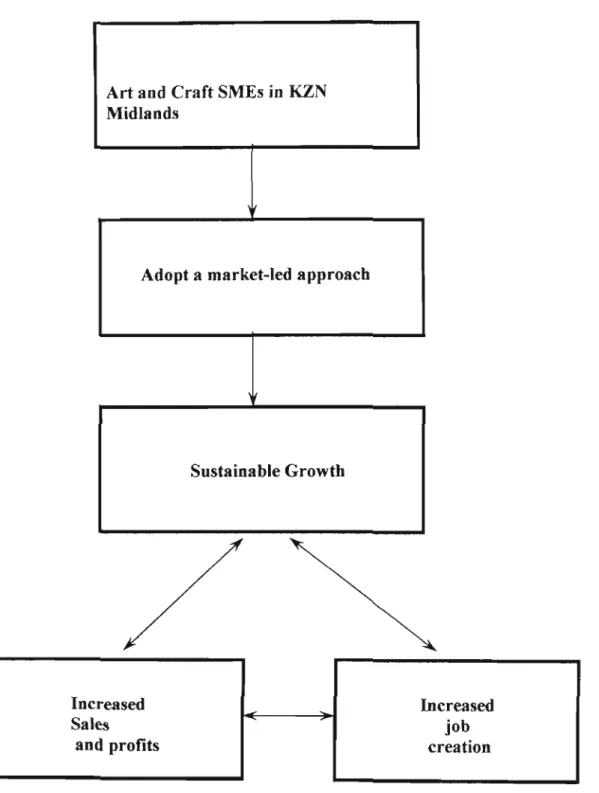
CHAPTER TWO LITERATURE REVIEW
Emergence of the art and craft industry
The problems facing the arts and crafts industry in developing countries are similar to those faced by SMEs in other sectors. The arts and crafts industry in South Africa has not been sufficiently integrated into the global craft market.

SME trends
These companies employ 70 percent of the working population and contribute 55 percent to the gross domestic product (GDP). Extensive research needs to be carried out to find ways in which the SME sector can take full advantage of the potential it has in order for it to grow.
Techniques for market analysis
Such clarification of the questions to be answered helps form the framework that guides the market analysis. Market analysis should be seen as an investment that will definitely bring returns and not as an expense.
Chapter summary
Successful and effective market analysis requires gathering sufficient information to enable a business to make effective decisions. Change is inevitable and therefore market analysis will help inform arts and crafts SMEs when and how to modify or change a product as dictated by markets.
CHAPTER THREE
SURVEY AREA AND SAMPLE CHARACTERISTICS
Significance of study area
Third, the area is a major tourist area that is well known for arts and crafts SMEs. The arts and crafts sector is linked to the tourism sector and is therefore a seasonally based business.
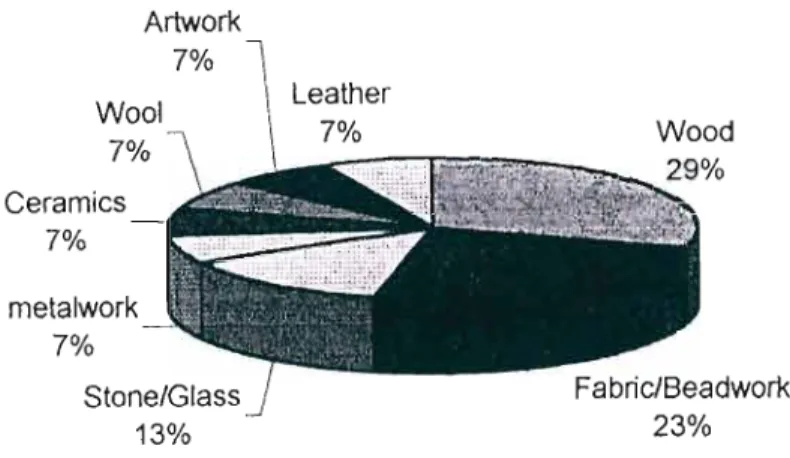
Age range (Years)
All 5MB owners were over 25, but thirty percent were between 26 and 35. Most of the SMEs were owned by women (sixty-three percent) compared to only men (thirty-seven percent). Two-thirds of the sampled arts and crafts SMEs (sixty-seven percent) were owned by white operators, and 33 percent were black-owned.
The business operating base relates to where the production activities and sales points of the business are located. First, and the largest category of the SMEs, 43 percent, (13 enterprises), were those that operated their businesses from the homes of the business owners (both for production and as a point of sale).
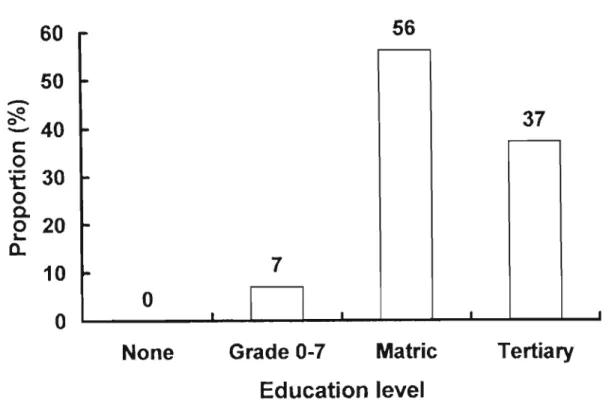
11 Product led
However, middlemen can visit their sales points like any other customer and buy products without the SME owner knowing their purpose. They would be treated like any other customer and not used as an indirect means of market access. The second category consisted of 33 percent (10 companies) that did most of the production at their homes and then transported the finished products to the point of sale, away from the production area but still within the study area.
The third category of SMEs, 24 percent, (7 companies), were those that carried out both production and sales in premises outside the home.
Home based
Home &
Rented
Rented Premise
Chapter summary
Fourth and most important, over the years many small businesses have developed, some of which offer arts and crafts items for sale. This makes the arts and crafts sector worth studying so that it can be strengthened and take advantage of whatever potential market it may have. The SMEs were therefore deliberately sampled and the criterion for inclusion was: arts and crafts SMEs in.
These arts and crafts SMEs produced a wide range of products from different materials such as wood, beads, stone, glass, metal, wool, leather, fabric, ceramics, paper and paint. This indicated a lack of youth venturing into arts and crafts as a means of earning a livelihood.
CHAPTER FOUR
RESEARCH DESIGN AND METHODOLOGY
- Research methodology
- Data collection instrument
- Questionnaire structure
- Types of questions
- Questionnaire structure and organisation
- Questionnaire pre-testing
- Data collection and analysis
- Chapter summary
Second, the study investigated whether the sampled arts and crafts SMEs in the KwaZulu-Natal Midlands conduct any market analysis and if they do at what point in the business did they initiate the process. Further questions in the same section sought views regarding the lack of adequate market exposure and poor performance of arts and crafts SMEs in relation to low-quality manufactured products. The opinions of selected SMEs regarding the roles of market consultants and intermediaries in the arts and crafts sector were also investigated in this section.
The people in the review team had previous experience in using questionnaire and SME research techniques. The aim of the study was to make comparisons between the business approach adopted by an arts and crafts SME (market or production oriented) and its growth and sustainability (sales turnover and jobs created).
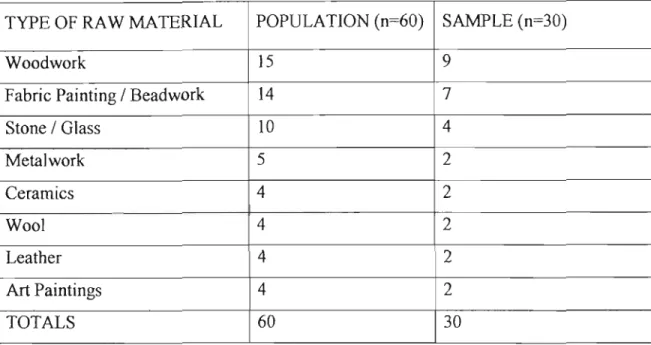
CHAPTER FIVE
RESEARCH RESULTS AND DISCUSSIONS
Do sampled SME owners consider market analysis vital to sustainable SME growth?
The results showed that 50 percent of the sampled SMEs (15 enterprises) considered the market analysis exercise to be too expensive. A further statistical analysis using Pearson's bivariate correlation was conducted to try and explain why only one third of the sampled SMEs carried out market analysis. A further statistical analysis was conducted to investigate whether or not the type of products produced (raw material used) affected the performance of the sampled SMEs in terms of annual revenue realized.
Of the SMEs that conducted a market analysis, 60 percent (6 companies) were male-led, while 40 percent (4 companies) were owned by women. None of the elementary school entrepreneurs did a market analysis for running their business.
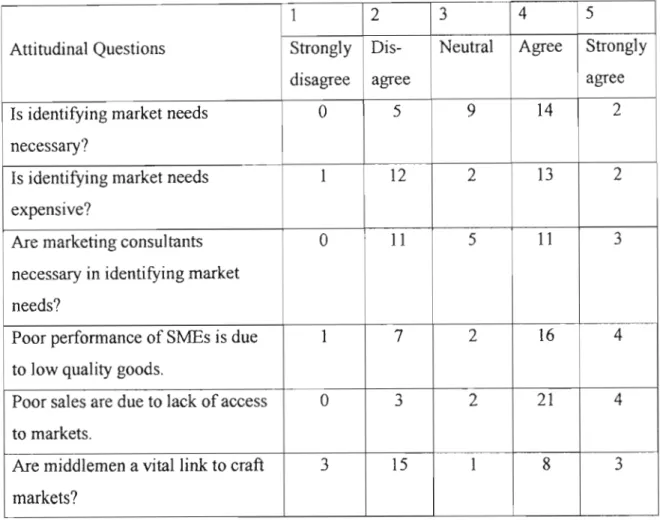
Does adopting a market-led approach lead to increased sales turnover and job opportunities created?
A similar question was asked about the number of employees an SME had at the start of the business and at the time of the research. Regarding income, a larger percentage of sampled SMEs 83.3 percent (25 enterprises) experienced an increase in their annual income. The results showed that the average annual income among the sampled SMEs of market-oriented SMEs (10 enterprises) was R522,000 per year greater than that of production-oriented SMEs (20 enterprises), which averaged R80,195 per year, indicating that market. Directed SMEs were performing better than production-oriented ones in terms of realized income.
This indicates that very few of the selected SMEs have been in business for a long time and may imply that most may have entered the business only recently. However, other factors such as the ability to define the target market and type of product also play an important role in increasing growth as shown in Figure 5.4 where 63.3 percent of the sampled SMEs experienced growth regardless of whether they were market oriented. or production.
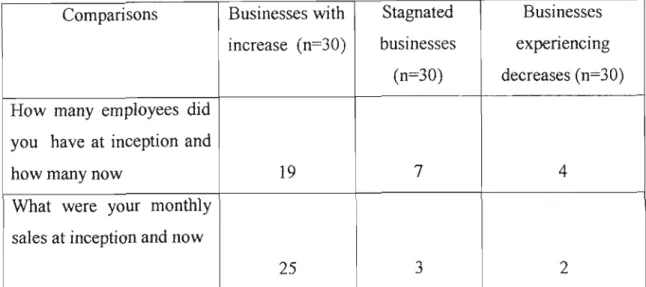
Summary in relation to the study problem and hypothesis
The market-led approach to running a small business is advantageous because the SME produces goods for a known need and therefore offers guarantees for greater sales of the products. However, 33 percent (10 companies) of SMEs expressed the view that the key to their sustainability is knowing their market needs and have therefore chosen to use a market-led approach to running their businesses. None of the companies in the sample used the market-led approach at the start of their companies.
These results support sub-problem two and indicate that very few SMEs in the arts and crafts sector have adopted the market-driven approach and many of them do not conduct market analyses. Lists of the area's arts and crafts shops were collected from the Midlands Meander Association road maps and by word of mouth.
Summary of findings
The classification of the study as descriptive dictated the method that would be used to collect data and information. Two-thirds of arts and crafts SMEs (67 percent) were owned by white operators and 33 percent were black-owned. Other influencing factors include the ability of an SME to clearly define its target market, as well as the type and quality of products produced.
And even then, 70 percent of market-led SMEs were partially market-led because they only conducted market analysis and communicated with their markets when their sales were low. The reason for this can be attributed to the fact that market analysis was widely misunderstood by 50 percent of the sampled SMEs as being a complicated and expensive procedure that can only be carried out using the expertise of marketing consultants and analysts.
CENTRAL
COMMITTEE OF
CLOTH
POTTERY
Suggestions for further research
The study would have been improved if it had covered a larger sample and also included SMEs from other sectors. A parallel survey should have been conducted among SMEs in the arts and crafts sector run by intermediaries to find out whether or not they also adopt a market-driven approach, and then compared with the current survey to assess the performance of to evaluate each of them and thus find out The question is whether a market-driven approach is certainly crucial for an SME. Secondly, the sample area would have been extended to include most other parts of the KwaZulu-Natal region and not just the Midlands.
The ability of 5MB owners to easily access more finance should also be explored. WWW.doc]URL:http://www.dacst.gov.za/arts culture/cuI ture/industries/index.htm.
APPENDIX A
MAP OF STUDY AREA
APPENDIXB
SURVEY QUESTIONNAIRE
I am conducting research about the arts and crafts sector and how best to satisfy the markets and. or attract new potential markets. The purpose of this section is to collect information about products that are manufactured and/or sold. The poor performance of arts and crafts SMEs is attributed to the low quality of products. i) strongly disagree (ii) disagree (iii) neutral (iv) agree (v) strongly agree.
Poor sales in arts and crafts SMEs attributed to low market exposure (i) strongly disagree (ii) disagree (iii) neutral (iv) agree (v) strongly agree. Brokers are an important link to the arts and crafts markets. i) strongly disagree (ii) disagree (iii) neutral (iv) agree (v) strongly agree.
APPENDIXC
RAW DATA
APPENDIXD
STATISTICAL RESULTS
APPENDIXE
LIST OF SAMPLED ART AND CRAFT OUTLETS
